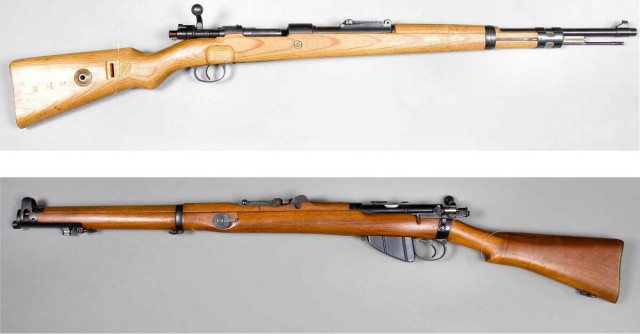
Bolt action rifles were the mainstays of armies across the globe for nearly over half a century, and today we pick what we believe to be the five best ever fielded. The list factors in effectiveness, fun factor, historical significance, and ease of use.
All five of these guns are fantastic, and we recommend you get behind them should the opportunity present itself!
Krag-Jorgensen
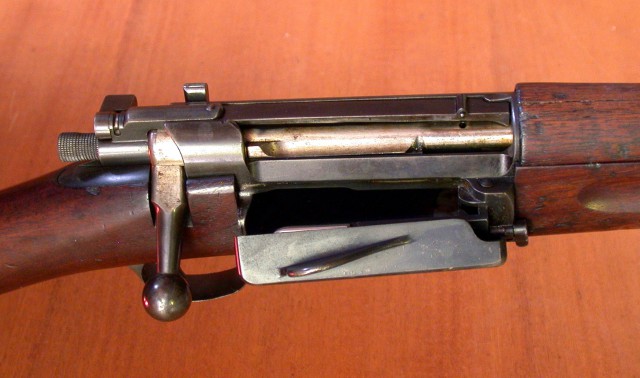
A distinctive feature of the Krag–Jørgensen action was its magazine. While many other rifles of its era used an integral box magazine loaded by a charger or stripper clip, the magazine of the Krag–Jørgensen was integral with the receiver (the part of the rifle that houses the operating parts), featuring an opening on the right hand side with a hinged cover. Instead of a charger, single cartridges were inserted through the side opening, and were pushed up, around, and into the action by a spring follower.
The design presented both advantages and disadvantages compared with a top-loading “box” magazine. A similar claw type clip would be made for the Krag that allowed the magazine to be loaded all at once, also known as the Krag “Speedloader magazine”.
The design was also easy to “top off”, and unlike most top-loading magazines, the Krag–Jørgensen’s magazine could be topped up without opening the rifle’s bolt. The Krag–Jørgensen is a popular rifle among collectors, and is valued by shooters for its smooth action.
Lee Enfield
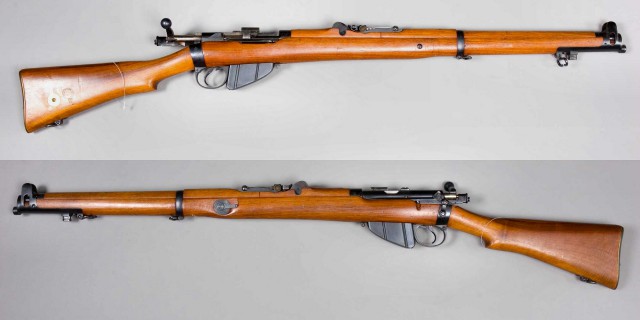
A redesign of the Lee–Metford (adopted by the British Army in 1888), the Lee–Enfield superseded the earlier Martini–Henry, Martini–Enfield, and Lee–Metford rifles. It featured a ten-round box magazine which was loaded with the .303 British cartridge manually from the top, either one round at a time or by means of five-round chargers.
The Lee–Enfield was the standard issue weapon to rifle companies of the British Army and other Commonwealth nations in both the First and Second World Wars. Although officially replaced in the UK with the L1A1 SLR in 1957, it remained in widespread British service until the early/mid-1960s and the 7.62 mm L42 sniper variant remained in service until the 1990s.
As a standard-issue infantry rifle, it is still found in service in the armed forces of some Commonwealth nations, notably with the Bangladesh Police, which makes it the longest-serving military bolt-action rifle still in official service. The Canadian Forces’ Rangers Arctic reserve unit still used Enfield No.4 rifles as of 2012, with plans announced to replace the weapons sometime in 2014 or 2015. Total production of all Lee–Enfields is estimated at over 17 million rifles.
The Lee–Enfield takes its name from the designer of the rifle’s bolt system—James Paris Lee—and the factory in which it was designed—the Royal Small Arms Factory in Enfield. In Australia, Canada, New Zealand, Southern Africa and India the rifle became known simply as the “three-oh-three”.
Karabiner K31

Each rifle included a 6-round detachable box magazine with matching stamped serial number. A charger is used to load the magazine from the top of the receiver.
The Karabiner Model 1931 replaced both the Model 1911 rifle and carbine and was gradually replaced by the Stgw 57 from 1958 onwards.
Although the K31 is a straight-pull carbine broadly based on previous Swiss “Schmidt–Rubin” service rifles and carbines, the K31 was not designed by Colonel Rudolf Schmidt as he was not alive in 1931 to do so. Mechanical engineer Eduard Rubin was the designer of the 7.5×55mm Swiss ammunition previous Swiss service rifles and the K31 are chambered for.
The Karabiner Model 1931 was a new design by the Eidgenössische Waffenfabrik in Bern, Switzerland under Colonel Adolf Furrer. The first 200 K31s were made in May 1931 for troop trials, thus the model number of 1931.
MAS 36

The MAS-36 bolt handle was bent forward in an “awkward fashion” to bring it into a convenient position for the soldier’s hand, some of which found today have since been bent backward into a facing-downwards position like that of many other bolt-action rifles. The MAS-36 had a relatively short barrel and was fitted with large aperture (rear) and post (front) sights designed for typical combat ranges.
Like the Lebel model 1886 rifle, the MAS-36 featured a stacking hook offset to the right side of the barrel for standing a number of the rifles (usually a trio) upwards.
Mauser K98k
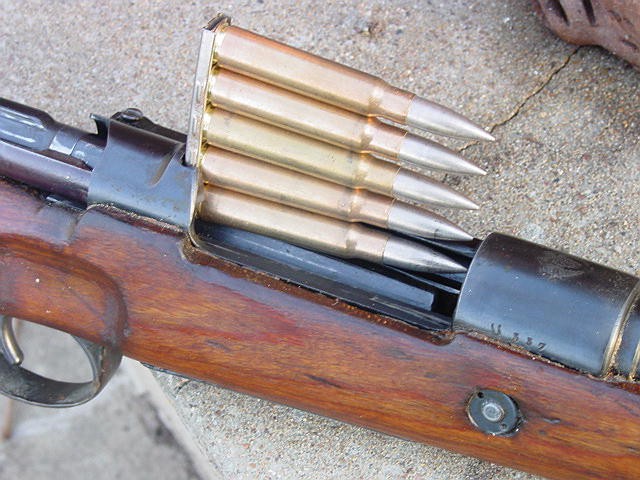
The Karabiner 98k is a controlled-feed bolt-action rifle based on the Mauser M 98 system. Its internal magazine can be loaded with five 7.92×57mm Mauser cartridges from a stripper clip or one-by-one. The straight bolt handle found on the Gewehr 98 bolt was replaced by a turned-down bolt handle on the Karabiner 98k.
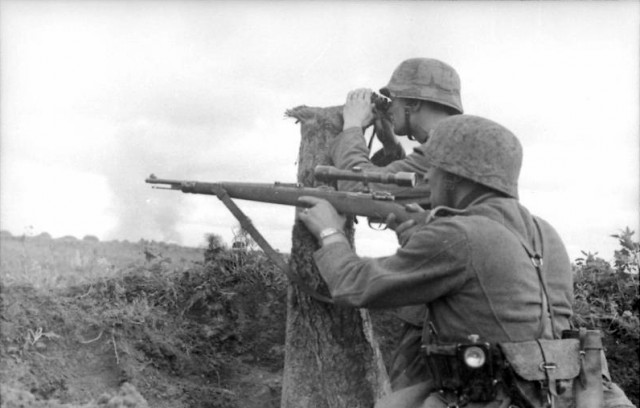
The Mauser Karabiner 98k rifle was widely used by all branches of the armed forces of Germany during World War II. It saw action in every theater of war involving German forces, including occupied Europe, North Africa, the Soviet Union, Finland, and Norway. Although comparable to the weapons fielded by Germany’s enemies at the beginning of the War, its disadvantages in rate of fire became more apparent as American and Soviet armies began to field more semi-automatic weapons among their troops.
Still, it continued to be the main infantry rifle of the Wehrmacht until the end of the War. Resistance forces in German-occupied Europe made frequent use of captured German Karabiner 98k rifles. The Soviet Union also made extensive use of captured Karabiner 98k rifles and other German infantry weapons due to the Red Army experiencing a critical shortage of small arms during the early years of World War II.
Many German soldiers used the verbal expression “Kars” as the slang name for the rifle.
www.warhistoryonline.com

Δεν υπάρχουν σχόλια:
Δημοσίευση σχολίου